Boxwood Issues…
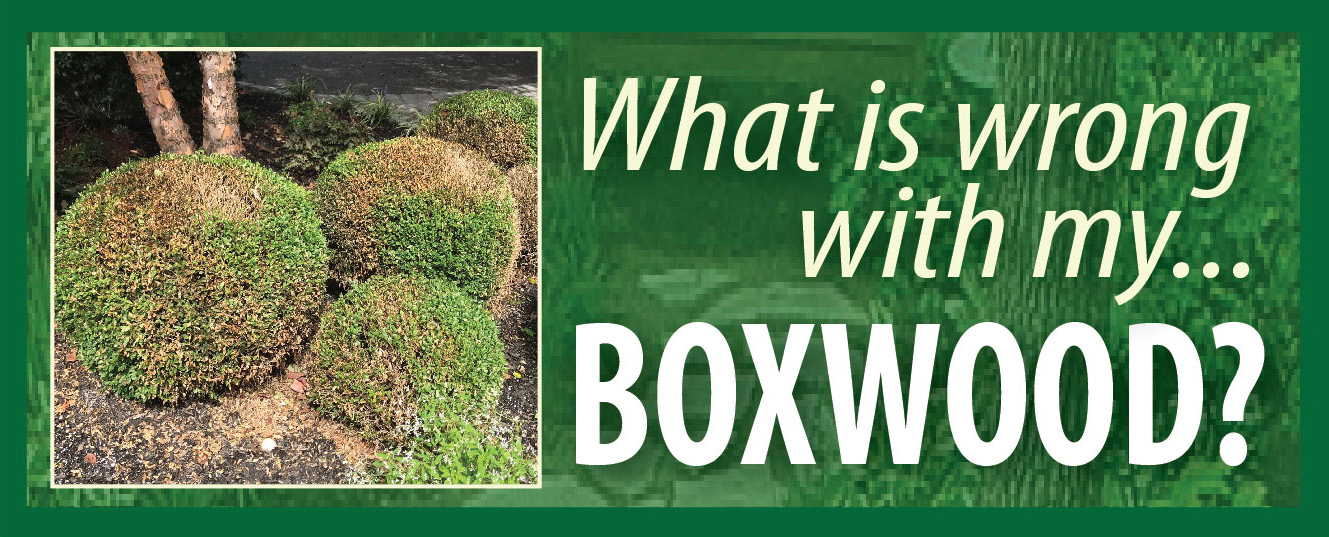
One of the most popular plants in the Midwest is, without a doubt, the beloved Boxwood. Homeowners are generally big fans of Boxwoods—and for good reason. They’re an incredibly hardy and compact plant that can perform well in a large variety of landscapes.
While Boxwoods are so appreciated for being easy, that’s not to say that they’re 100-percent foolproof. Like other plants, things can go wrong. If your boxwood is turning brown in its center or your boxwood leaves are turning yellow—or it’s experiencing some other problem—then you might be trying to figure out what to do. After all, you’re not a plant expert, nor should you have to be, and you’re really not sure what to do next.
The photos below represent 5 of the most common issues that Boxwoods in our area are incurring.
Boxwood Blight
Boxwood blight is a fungal disease caused by Calonectria pseudonaviculata. Boxwood blight has become a serious threat to nursery production and to boxwoods in the landscape, which has prompted several states to take regulatory action.
…Read More
Boxwood Leafminer
This is the larval stage of a tiny fly and can potentially cause damage to a Boxwood when it digs into the plant’s leaves and creates blister-like structures. A large infestation can ultimately lead to death.
…Read More
Box Tree Moth
This invasive pest can significantly damage and potentially kill boxwood (Buxus species) plants if left unchecked.
…Read More
Boxwood Dieback
Boxwood dieback symptoms include random dieback of twigs with light tan colored foliage. Affected leaves do not defoliate and tend to stay attached to the branches.
…Read More
Winter Damage
Another potential problem is Boxwood winter burn, which occurs when water is lost through the leaves and the roots are in frozen soil and unable to replenish the water. This happens with really cold temperatures plus wind.
…Read More
Below are more, in depth, information on these Boxwood afflictions.
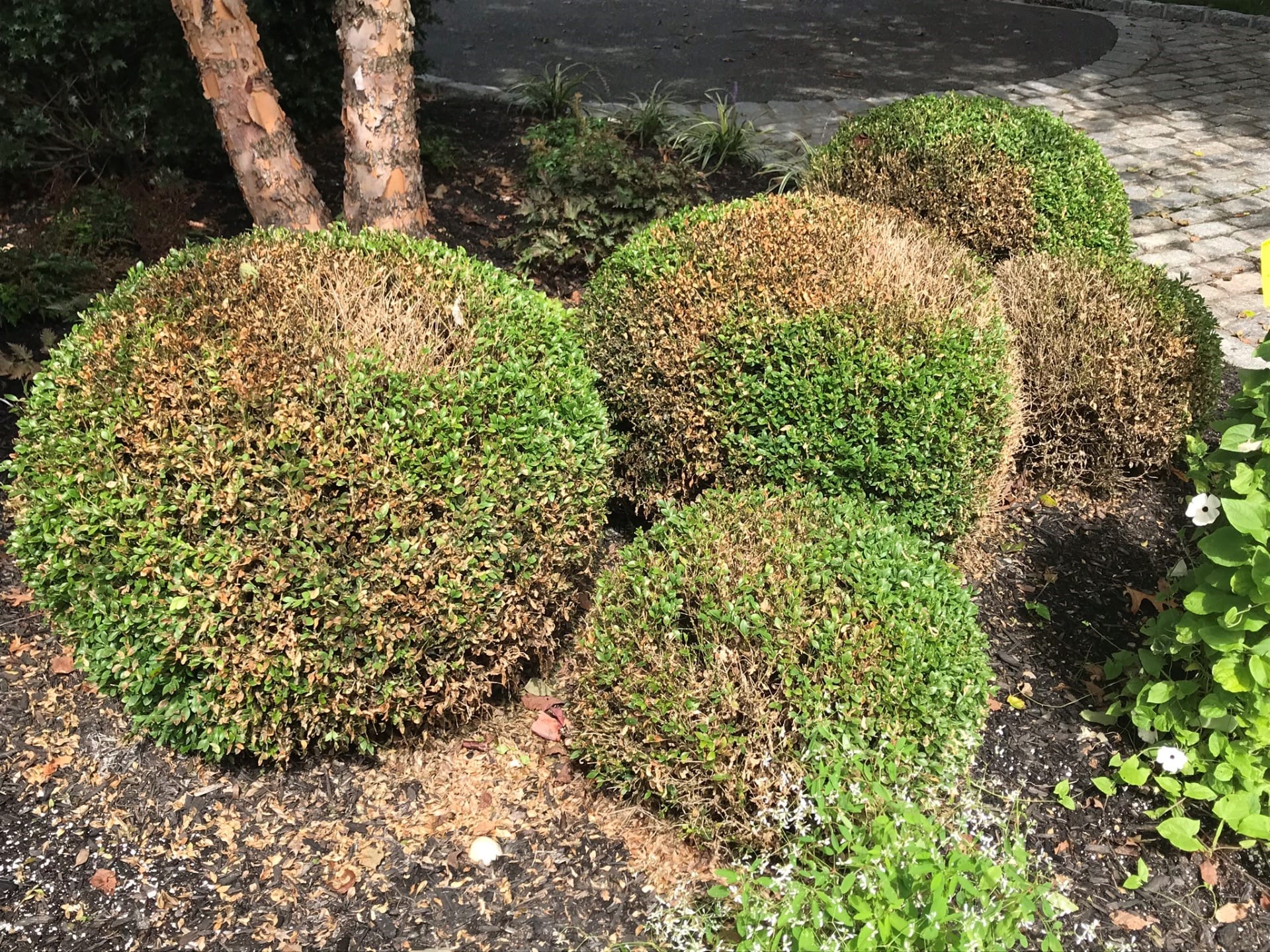
Boxwood Blight
Introduction
Boxwood blight is a fungal disease caused by Calonectria pseudonaviculata (previously called Cylindrocladium pseudonaviculatum or Cylindrocladium buxicola). This fungus is easily transported in the nursery industry and can be moved on infected plants that do not show any symptoms at the time of shipment as well as on shoots of infected boxwood greenery tucked into evergreen Christmas wreaths. Boxwood blight has become a serious threat to nursery production and to boxwoods in the landscape, which has prompted several states to take regulatory action. This publication provides information about boxwood blight and management options.
Disease Distribution
Boxwood blight was first reported in the United Kingdom in the mid 1990s. It is now widespread throughout most of Europe and was also discovered in New Zealand in 1998. Boxwood blight was confirmed for the first time in North America in October 2011 on samples collected in North Carolina and Connecticut. Since this first U.S. detection, boxwood blight has been reported in more than 20 states and three Canadian provinces.
Symptoms and Signs
The fungus that causes boxwood blight can infect all aboveground portions of the shrub. Symptoms begin as dark leaf spots that coalesce to form brown blotches. The undersides of infected leaves will show white sporulation of the boxwood blightBP-203-W Boxwood Blight fungus following periods of high humidity. Boxwood blight causes rapid defoliation, which usually starts on the lower branches and moves upward in the canopy. A key symptom that differentiates boxwood blight from other boxwood diseases is that narrow black streaks (cankers) develop on green stems. During periods of high humidity, white, fuzzy masses that consist of numerous clumps of spores will emerge from these black stem cankers. The spores can be observed on infected stems and leaves with a hand lens. The pathogen does not attack roots, but repeated defoliation and dieback from stem cankers can kill young plants in nurseries. Larger plants lose ornamental value as defoliation becomes severe.
Transmission and Disease Cycle
The fungus that causes boxwood blight can overwinter on infected plants and in infected leaf litter. The spores produced on infected leaves and stems during the growing season can be splash-dispersed through irrigation or rainfall. This can spread the disease within a plant or to nearby boxwood shrubs. The disease can also be spread greater distances. This primarily involves moving infected plants through nursery trade and using contaminated tools and transport vehicles that contain fallen, infected leaves.
Click here to check out more helpful articles on this issue.
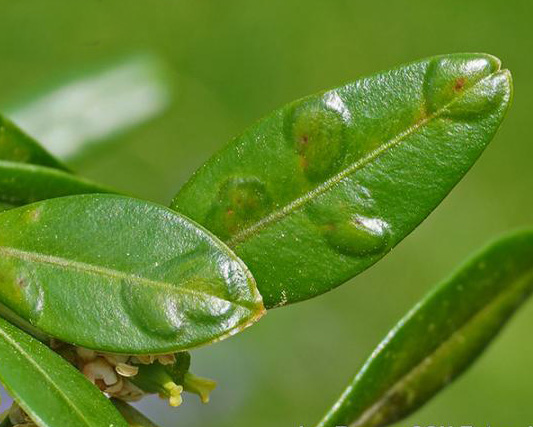
Boxwood Leafminer
This pest is the most serious pest of this evergreen plant. It occurs everywhere in the USA from the East to the West coast. All varieties of boxwood are susceptible but the slower-growing English varieties are less susceptible than the American cultivars. The leafminer feeds between the upper and lower sides of the leaf.
Symptoms and Diagnosis
The larvae feeding between the upper and lower parts of the leaf causes blisters on the underside of the leaf. The leaves infested by this pest become yellow and smaller than a normal leaf. When the plant is severely infested, it appears completely unhealthy.
Life Cycle
Boxwood leafminers over-winter as partially-grown larvae in the leaf blisters. When the days warm in spring, the larvae become active and grow rapidly feeding between the upper and lower leaves for the balance of the summer. In May the adults force the pupal skin out of the mine, where it hangs for a few days after the fly, a gall midge, emerges. The adult leafminer is a yellow to orange-red fly that looks like a mosquito. Adult flies swarm around boxwoods about the time that the Weigelas bloom. When the boxwood’s new growth appears in spring, the females mate, then insert their eggs into the underside of the leaves. The adult fly dies soon after. The eggs hatch in about 14-21 days into the larval stage ( a maggot) that grows and feeds for the rest of the summer. The leaves develop the characteristic blisters as the larvae feed. The larvae then develop into orange pupae which darken before the adults emerge. One generation of the pest occurs each year.
Click here to check out more helpful articles on this issue.
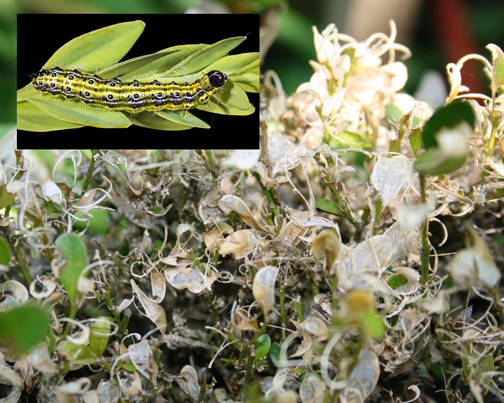
Box Tree Moth
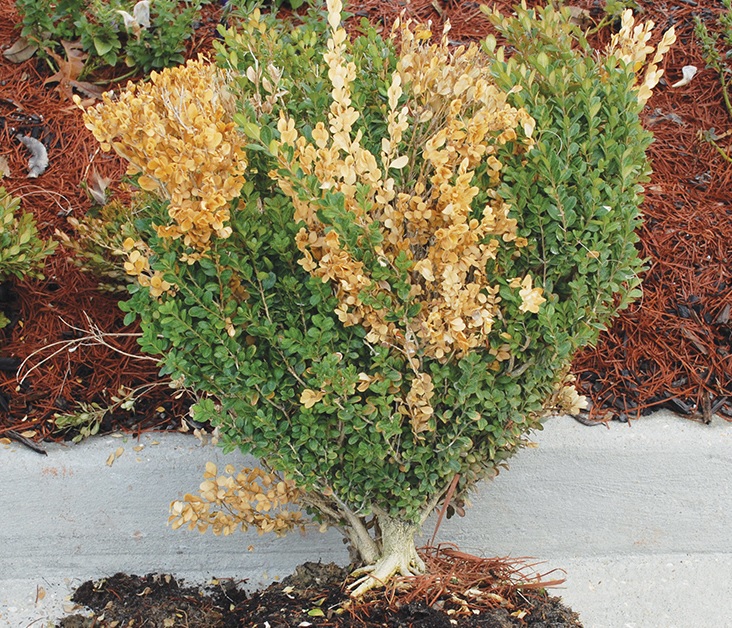
Boxwood Dieback
Boxwood dieback symptoms include random dieback of twigs with light tan colored foliage. Affected leaves do not defoliate and tend to stay attached to the branches. Root and crowns of affected plants look normal. These symptoms on boxwoods have been long observed in landscape plantings, but were always attributed to phytophthora root rot or volutella blight. The infection also causes bright black discoloration of stem immediately under bark. This bright black discoloration extends all along the infected twigs and differs from discoloration of the crown region caused by phytophthora root rot.
Click here to check out more helpful articles on this issue.
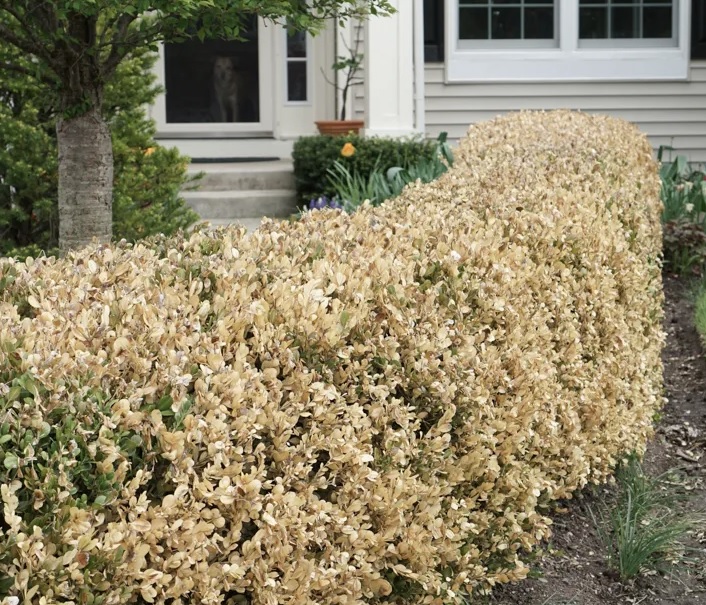
Winter Damage
Generally, boxwood will be less likely to suffer winter damage if it is hardy for the planting zone; appropriate for the environmental conditions, and properly planted and watered. In short, follow the golden rule of gardening: right plant, right place! The following tips will help you find the right place for boxwood in your garden and start you on the best course for protecting boxwoods from winter damage.
Click here to check out more helpful articles on this issue.

